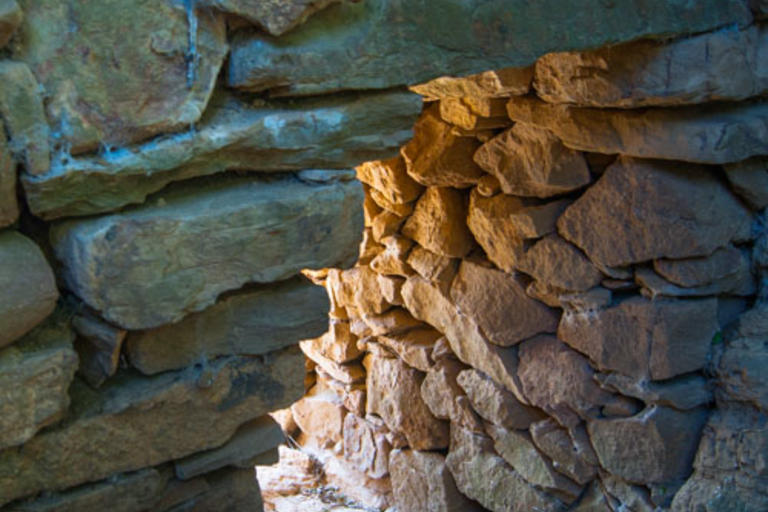
Introduction
To the left of the route there is an interesting example of construction with dry stone. This traditional style of construction which is very deep rooted in this area is a very economical method as it does not require any connecting material between the pieces. The positioning of the stones itself supports the structure, and it is even possible to make channels like the one before you.
In this case, dry stone has been used to channel a small seasonal stream passing between fields, but it is more commonly used to create land for crops on terraces. You will have seen some of these dry-stone terraces and walls today, but most of them are abandoned as this method was typical of periods when it was important to make the most of steep ground, and small fields were created in mountainous areas. At present, however, attempts are being made to recover the culture of dry stone as cultural, historic and scenic heritage.